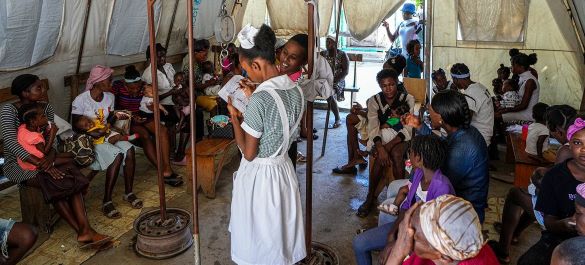Alarming surge in armed violence in Haiti heightening risk of malnutrition crisis warns UNICEF
Findings
from the recent Integrated Food
Security Phase Classification (IPC) analysis indicate an alarming 19
per cent increase in the number of children estimated to suffer from severe
acute malnutrition in Haiti this year.
Around 1.64 million people are facing emergency levels of acute
food insecurity, (IPC Phase 4), which increases the risk of child wasting and
malnutrition.
The ongoing
armed violence across Artibonite department and the West department, which
encompasses Port au Prince, has restricted aid delivery and severely weakened
an already fragile healthcare system, posing an imminent threat to the lives of
over 125,000 children at risk.
“The violence
and instability in Haiti have consequences far beyond the risk of the violence
itself”, said Catherine Russell, UNICEF Executive Director.
The situation
is creating a child health and nutrition crisis that could cost the lives of
countless of children, she added.
‘Thousands of children
on the brink’
“Thousands of
children are on the brink, while life-saving supplies are ready to be delivered
if violence stops and roads and hospitals are opened. This malnutrition crisis
is entirely human made,” Russell said.
“Basic security
is urgently needed for the people of Haiti, for the life-saving services they
rely on, and for humanitarian workers to reach children and families in
desperate need.”
Since January,
the deteriorating security situation has continued to worsen the humanitarian
crisis, with serious consequences for UNICEF’s ability to store, deliver and
resupply aid.
Despite the
highly volatile environment, UNICEF is doing all it can to protect families and
provide life-saving support, including for those who are trapped and cut off
from essential services.
The agency is
calling for accelerated efforts by the international community to protect
civilians, restore law and order and keep humanitarians safe; an immediate
flexible funding boost; and protection for schools, hospitals and other key
spaces for children.


